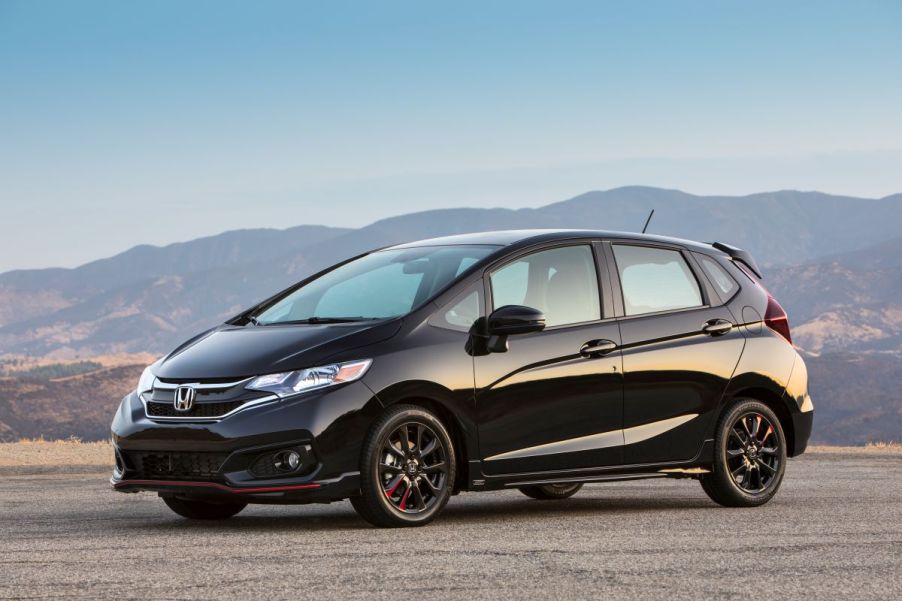
Is the Honda Fit the Best City Car for Uber and Grubhub Drivers?
Honda’s five-door Fit hatchback is a cheap and cheerful way of getting about. Despite its small size, it can accomplish much more than ferrying the driver to work. Boasting an inventive monospace design, it’s styled as a more utilitarian subcompact than others. With the ways the seats can fold, the packaging of the undercarriage, and overall reliability, the Honda Fit may be one of the best cars for people driving for Uber and Grubhub.
How is the Honda Fit different from other subcompacts?
Although the Honda Fit is dimensionally similar to others in the subcompact segment, it’s rather roomy inside. That spaciousness is made possible by clever engineering. For instance, Honda put the fuel tank under the front seats, lowering the rear floor.
The third-generation Fit featured in 2015 may be shorter compared to its predecessors, but it provides five more inches of legroom in the back, Kelley Blue Book says. Moreover, the space-saving was done without sacrificing driver comfort. Despite some lackluster ergonomics for the driver, the back is where the magic happens.
Back seat magic
In the rear of the Honda Fit, the “Magic Seat” folds as expected in any hatchback. It’s the “40” side of the rear’s split-folding seating row. Taking the headrest off the front passenger seat and folding the back down will grant even more room. Then, owners can haul around items seven and a half feet long.
The rear seat bottoms can fold up to the seat backs. This gives owners the ability to carry large, oddly-shaped items. For instance, cyclists won’t have to lay their bikes down in the back. It will fit perfectly into the ear seating row, even if it has 29-inch tires, but taking the front tire off will make for an easier fit.
Folding the seats can also be managed using one hand. That’s excellent if you have large items or bags of food deliveries in tow.
SUV-level rear cargo area
The Honda Fit features 16.6 cubic feet directly behind the rear seating row. It can fold flat if it doesn’t need to be used. With the 60/40 split-folding row down, owners will have 52.7 cubic feet of space inside the Fit. That’s more than some crossover SUVs.
A tall lift-over height and the wide rear hatch make loading and unloading a breeze. Uber or Lyft drivers can empty or fill their Fit regardless of height or strength.
What about carrying people?
The Fit performs similarly well when hauling people. Up front, drivers will have ample room without cramping passengers in the rear. The back seats may not be ideal for loftier passengers, however. The third-generation Fit does have a lower roof than the preceding models. Nevertheless, the Fit can still seat three in the back.
Flanking the middle position, the two rear passenger seat backs offer a two-position recline feature. But that’s only on third-generation Fits built after the 2014 model year.
Which model year Honda Fit should Uber and Grubhub drivers buy?

For the third-generation Honda Fit, owner entries on CarComplaints documented a series of electrical snafus in the 2015, 2016, and 2017 model years. Additionally, Honda seemed to solve the problem with the Fit’s “extremely uncomfortable seats” by 2017. Therefore, the last four model years up to Fit’s 2020 discontinuation are the most reliable in the vehicle’s history.
The touchscreen infotainment system might be a drawback depending on the road conditions. Since it doesn’t have a physical control knob, changing the volume while driving down a cobbled street may be challenging. Regardless, the range-topping EX-L’s heated front seats can keep an Uber passenger’s bottom warm or a Grubhub pizza.


